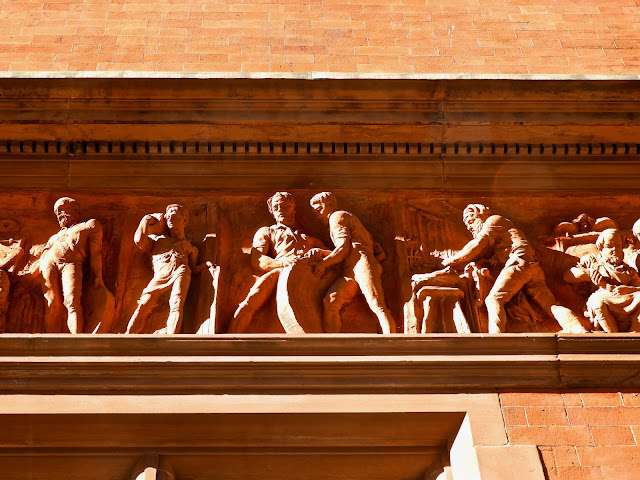There is one large gallery at the Victoria and Albert Museum that contain copies or casts of artworks from all over the world. Here is perfect cast of Michelangelo's David.
Behind David in the lower right you can see a small cast for Donatello's David.
This room in the museum was created especially to display these plaster casts that have been part of the museum's collections since the museum was founded in 1851.
The museum collected these "copies" so that people who didn't have the means to travel could enjoy them and learn from them.
The copies of Trajan's columns are especially impressive.
I especially liked the cast above. It is described as a Tympanum dating between 1852-54 from England. A little research found that this was over a doorway in a church in Shobdon that was demolished in the 18th century. Two doors from the church were erected in a park in Shobdon as a folly. This copy was made from that folly in the 1850's. I found a site with a photo of the original here. It's very worn but it can still be seen.
To the right is cast of a tabernacle dating to 1876 from Belgium.
Here is a cast of a massive pulpit. The cast was made in 1865 but the original from Pisa dates back to 1302.
If you would like to see a little video tour of this room, there is a short video at this link.
This room is just crammed full of fascinating things to see.





















